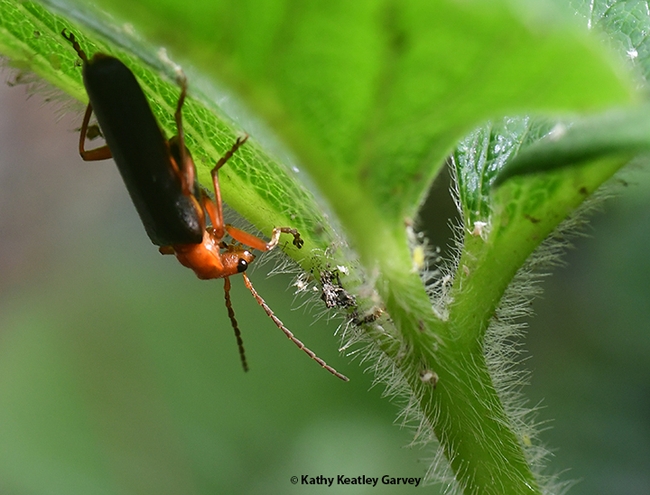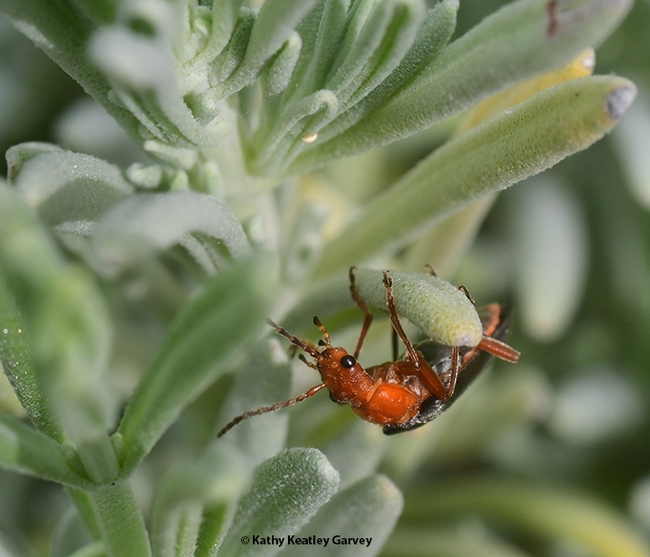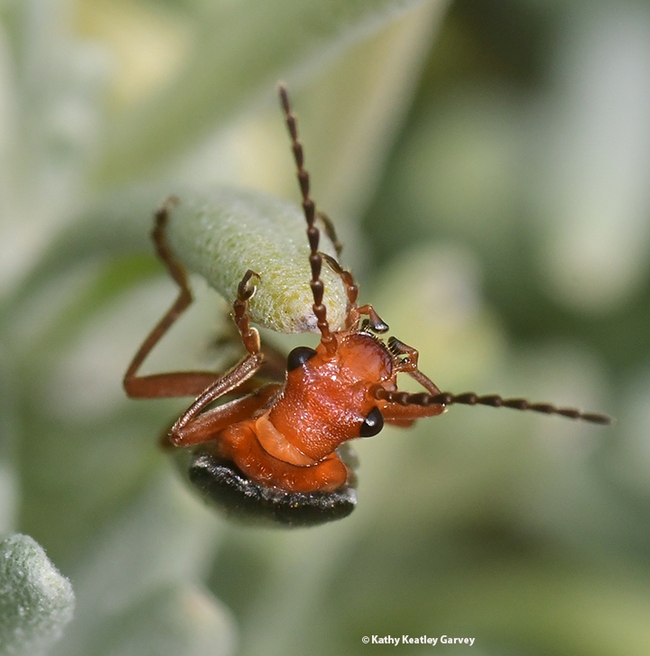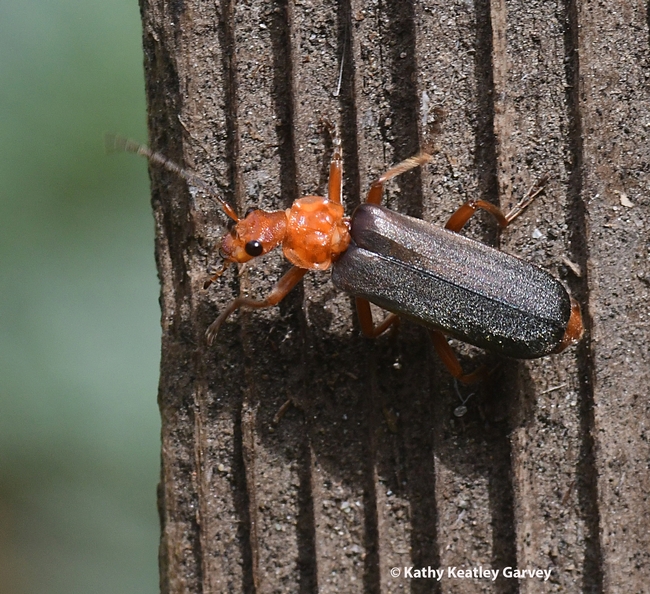They're curious little critters.
When solider beetles (family Cantharidae) go on patrol in your garden, don't kill them. They're not being deployed to harm you.
They're the good guys. They eat aphids and other soft-bodied insects.
Sometimes called "leatherwings"--they look like the insect equivalent to the British soldiers in the American Revolution soldiers--soldier beetles compete with lady beetles (aka ladybugs), lacewings, damsel bugs, long-legged flies and other insects for aphids. Larvae of lady beetles and syrphid flies (aka flower flies and hover flies) also feast on aphids.
The UC Statewide Integrated Pest Management Program (UC IPM) provides a good description of the soldier beetle:
"Adult soldier beetles are elongate and usually dark brown to black with orange, red, or yellow. The head is commonly bent downward. The antennae are 11-segmented, threadlike, and commonly held forward of the body. The pronotum is usually wider than the head and wider than long. The wing covers are smooth to velvety appearing and soft and flexible, giving rise to the common name leatherwings. Adults range from 1/16 to 1-1/8 inches (1.5 to 28 mm) long, varying by species....About 160 species of soldier beetles in 11 genera occur in California. Common genera include Cantharis, Chauliognathus, and Podabrus."
Adults are active during the day and usually observed on flowers or leaves infested with aphids or other honeydew-excreting insects," UC IPM says. "When disturbed, adults may withdraw their legs and drop to the ground as if dead. Adults' blackish and red coloration alerts vertebrate predators that cantharid beetles are distasteful; adults, larvae, and pupae can excrete noxious, defensive chemicals from specialized abdominal glands."
None that visited our garden last weekend dropped to the ground. We didn't disturb them, either (we were using a 200mm macro lens).
Attached Images:

A soldier beetle seeking aphids and other soft-bodied insects on a strawberry plant. (Photo by Kathy Keatley Garvey)

Here an aphid, there an aphid...A soldier beetle on patrol. (Photo by Kathy Keatley Garvey)

This image shows the soldier beetle's 11-segmented antennae. (Photo by Kathy Keatley Garvey)

A quick flight to a fence post and then the soldier beetle prepares to leave. (Photo by Kathy Keatley Garvey)